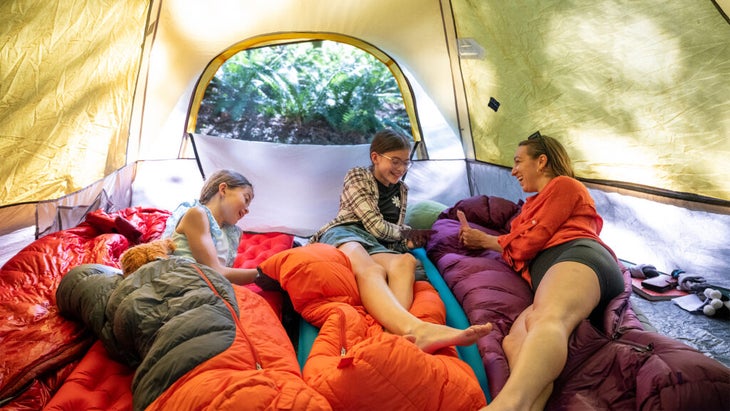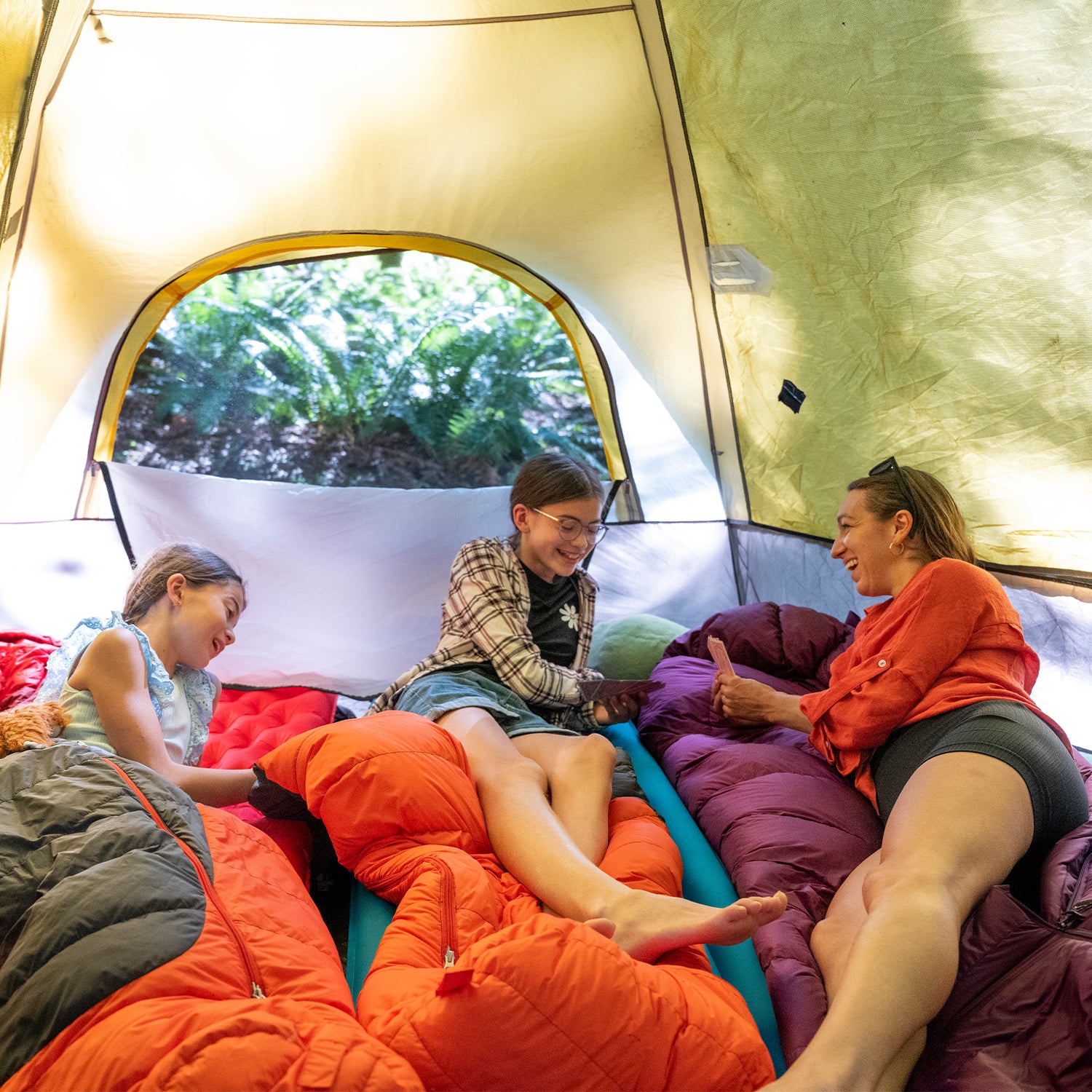An editor at ���ϳԹ��� once told me about a winter camping trip he took on his birthday. He and a few friends skinned up into a high basin in the Sierra Nevada on skis to camp and tick off lines for the weekend. The only problem was, he took a 20-degree sleeping bag, and the temperatures at night dropped into the single digits. After burning all his energy shivering overnight, he was too exhausted the next day to climb to his ski line and had to head home early. Some birthday weekend.
Getting the right sleeping bag can make or break an adventure. But there are so many factors to nail. How should you think about stated temperature ratings? What the hell is fill power anyway? What arcane witchcraft is a denier number?
Below, we break through the jargon and marketing claims, give you the tools you need to understand how sleeping bags work, and help you find the right one for your unique needs. Consider this the ultimate guide to picking the right sleeping bag.
What Temperatures Will You Use It In?
A sleeping bag’s job is to keep you warm. It does that by preventing convective heat loss. In other words, it keeps your body heat from escaping into the cold air. While you sleep, your body is also subject to conductive heat loss, which comes from contact with the cold ground. That’s why we recommend you think of a sleeping bag and a sleeping pad as a single, cohesive system.
If you want to get into the nitty gritty of how sleeping bag temperature ratings are determined, you can read all about that process here. But the bottom line is that lots of testing goes into determining the three temperature ratings you’ll see on almost every sleeping bag.
- Comfort: This is the range at which your sleeping bag will feel absolutely cozy.
- Limit: This is the range at which you’ll sleep a few hours, but probably not comfortably.
- Extreme: This is the range at which you’ll survive, but it will not feel good.
The bad news is that understanding what performance is being advertised is a little tricky. Most bags highlight the “limit temperature” in their naming conventions. Limit is the absolute lowest temperature you’ll want to use the bag in, and it will not feel comfortable.
So, if you see a bag called the “SuperDuperSleep 10,” you can typically understand that to mean it has a limit temperature of 10 degrees. And that can be confusing because you can’t just climb in that SuperDuperSleep 10 and expect to sleep super duper in 10-degree temperatures. If the limit temperature is 10, the comfort temperature will probably cap out around 20 or 25 degrees. (This is less true in women’s bags, where the model names often reflect the comfort rating.)
One thing we will note about the temperature-rating process is that the pad used to test bags is much warmer than most of the popular pads consumers tend to buy. If you want your bag to perform like the temperature rating that’s written on the side, you’ll need an extremely warm pad, like a .
If you want to ensure warm sleep when it’s cold outside, then buy a bag with a comfort rating at least 10 degrees colder than the lowest temperature you plan to use it in. That way you’ll have a little cushion should the unexpected happen.
How Will You Carry It?
Do you plan to use your new sleeping bag only for car camping, or will you want to take it backpacking? If you want to carry your bag, you’ll need to prioritize packed size and weight. Bags that are both compressible and warm tend to be expensive. Ones that just need to fit in the back of a truck are free to be a little heavier and more spacious. Heavier materials also tend to be more comfortable and less expensive.
If you can only buy one bag—and you live in a mostly dry climate—make it a simple down mummy bag designed for backpacking. Skip any crazy-expensive ultralight materials or designs, and you’ll end up with a versatile solution that can work anywhere from a truck bed to a weekend trek through the mountains.
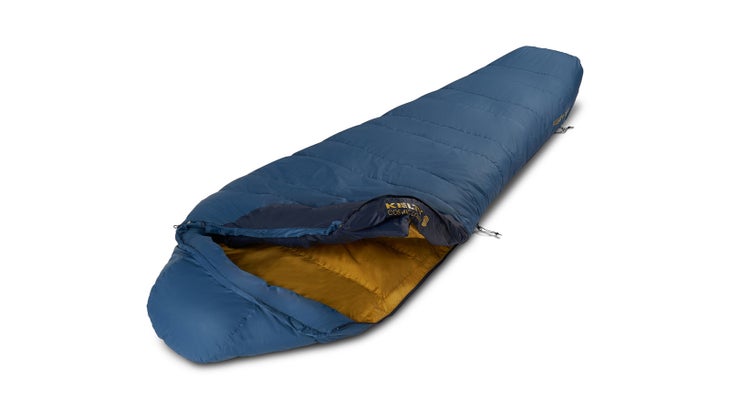
Can You Keep It Dry?
Down insulation is light, compressible, and durable. But despite recent innovations in chemicals used to coat the down fluffs, it still loses its loft if it gets wet. That means it will wilt and compress, and stop insulating until you dry it out. Despite performance claims, water-repellent coatings only work to shorten the time in which it takes the down to dry. Even with a coating, that typically won’t happen overnight.
Synthetic insulations, on the other hand, perform better when exposed to moisture. But, they also tend to be heavier and less compressible, and they aren’t going to last through decades of use like quality down will.
If you plan to use your bag in a very wet environment like the Pacific Northwest, or are buying a bag to use on float trips, then synthetic insulation may be the better choice. But down will probably work best for most campers due to its superior loft and longevity. If you’re worried about exposure to rain or submersion, consider housing your down bag in a lightweight, silicone-coated nylon dry bag. The only issue there is that any moisture trapped in the bag in the morning (the human body produces about a quart of water each night), will remain trapped inside a dry bag. So make sure you give your sleeping bag time to dry out between uses. Store any sleeping bag uncompressed, hanging inside a warm closet.
While synthetic insulation is typically thought of as being cheaper than down, there’s actually a wide variety in quality and performance across both material categories. We’ll dive into that below.
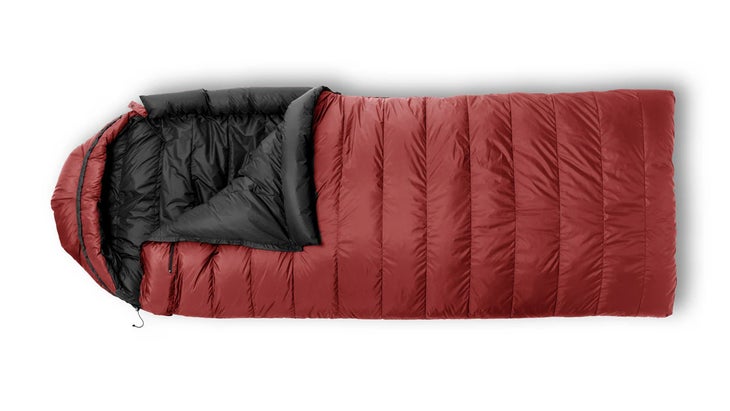
How Do You Want It To Fit?
Basic mummy bags are narrow at the feet and wide at the shoulders, and they wrap insulation over your head to prevent heat loss from exposed skin. Rectangular bags are as wide at the feet as they are at the shoulders to give you more space inside. Most also skip the hood. There are seemingly endless twists and combinations on those basic formulas designed to reduce weight, increase warmth, or just catch the eye on crowded shelves.
There are positives and negatives to every change. While a roomier design may allow you to toss, turn and spread out in your sleep, it’ll also be less efficient at trapping body heat. Ultralight quilts that look like mummy bags without backs may seem like a way to cut weight while gaining roominess, but they can be hard to really cinch down on cold nights. That means some heat loss is pretty much inevitable.
There’s also all of our unique body shapes to consider. And while matching a bag’s length to your height is pretty easy, pairing one to your shape is often trickier. Men’s and women’s bags map insulation differently based on differences in physiology. Women’s bags have narrower shoulders and wider hips, for example. It can be a good idea to visit a physical retail location and try different types of bags from multiple brands to find the one that fits you best.
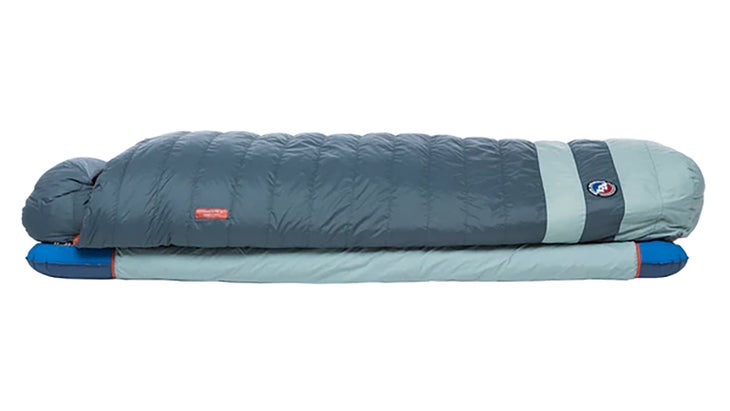
What Features Do You Want?
Let’s start with the functional stuff. Since it’s the job of a sleeping bag to prevent convective heat loss, features like zippers covered by insulated plackets, baffles that close tightly around your neck, and drawcords that allows you to tighten up the head opening are important considerations that can all work together to prevent cold air from being sucked inside the bag every time you toss and turn.
From there, bags may have all sorts of frills like phone pockets (batteries need to be kept in a warm place on cold nights to prevent them from draining quickly), or very Instagram-friendly arm and foot holes so you can take selfies while standing up inside your bag. These things tend to add cost and potential points of failure, while distracting from more important performance metrics like temperature ratings and quality materials.
One area where sleeping bags can functionally differ is in their relationship with sleeping pads. Bags that include pad sleeves help create a unified sleep system in which the bag’s back insulation can be reduced or eliminated since it’ll never be exposed to cold air. Such setups can help eliminate unnecessary weight and bulk while adding space inside the bag, but they typically restrict you to using pads of specific widths and sizes.
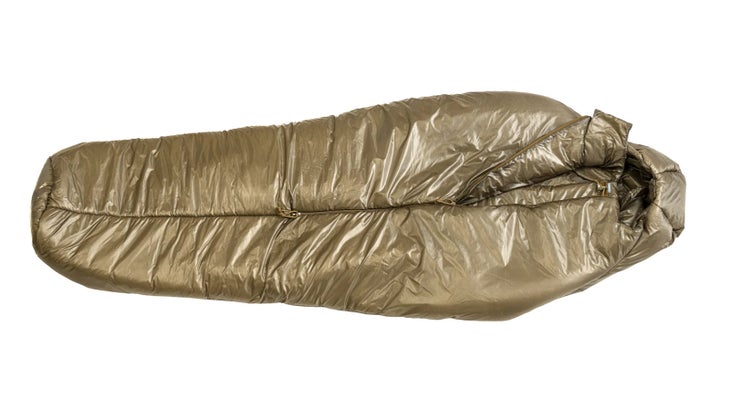
Kifaru Slick Bag Os
How Much Money Do You Want To Spend?
After temperature ratings, there’s one other important number that will determine how much money you’ll spend: fill power.
Fill power is not a measure of warmth; it is a measure of compressibility. The number, typically expressed as something between 500 and 1,000, is the amount of cubic inches one ounce of the material in question is capable of lofting to fill. So, one ounce of 650-fill-power down clusters will fill up less space than an ounce of 850-fill-power down. That means a bag filled with 650-fill will generally have to have more clusters—which means it’ll be heavier and less compressible than an 850-fill bag of the same size.
If a bag (or any other item made using lofted insulation) lists its fill weight, you can then surmise how much insulation it’s packing, and use that number as a point of comparison with other products. So an 850-fill bag equipped with 16 ounces of down will come with 13,600 cubic inches of insulation (cubic inches x ounces = total material). Since that’s most of what you’re paying for, this can be a good way to cross-shop on pricing.
For synthetic insulations, you’ll see the insulation power measured in terms of density. Insulation density is listed as grams per square-meter, or GSM. This number lets you compare one insulation to the other.
Of course, all this comparison assumes that you’re talking about insulations of identical quality, and there’s just a ton of variation there. When it comes to down, the ways in which it is sourced, harvested, processed, and treated are all variables that end up being really important to both its performance and longevity.
Cheaper downs will be mechanically harvested in ways that can not only hurt animals, but also damage the product. There will be a higher percentage of feathers to down clusters in the resulting product. That limits warmth and compressibility, since actual feathers are less compressible and less insulating than down fluffs are. More feathers can also damage face fabrics since their sharp quills are prone to poking through. Low-quality down can also be treated harshly with high-temperature processing. This processing removes the natural oils that help down resist moisture and hold up to long term use. To ensure quality, look for down sourced from , or from a source compliant with the voluntary .
With synthetic insulations, quality varies just as widely. The spun polyester inside a bag you buy at a discount store is not going to compress, perform, or last like something made from a high-quality insulation like Climashield Apex or Primaloft Gold. Look for name-brand fabric technology over generic insulation types.
Lastly, let’s go over face fabrics, which contain a bag’s insulation. These are typically listed in terms of denier. Denier is the mass (in grams) of 9,000 meters of the material in questin. In practical terms, it measures how thick and durable the threads are. Low-denier fabrics are gossamer and lightweight. High-denier fabrics are burly and robust.
Very light, very thin face fabrics may help cut weight and packed size, but they also tend to be fragile and expensive. Very heavy canvas materials can be nice to have for car camping as they utterly resist abrasion and penetration, but they can lead to a bag so bulky it can be hard to even fit inside your trunk. A good middle ground tends to come around 20 to 40 Denier, which, when paired with a reasonable fill power down or quality synthetic insulation, will give you that light, durable, affordable, versatile mummy bag that’s probably the answer to most of your needs.
